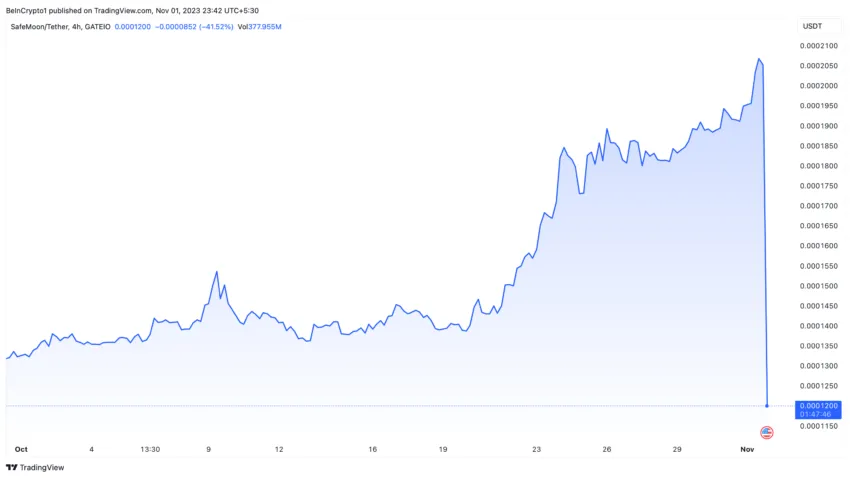The SEC Accuses SafeMoon Executives of Fraudulent Scheme
The Securities and Exchange Commission (SEC) has filed a complaint against SafeMoon, its creator Kyle Nagy, CEO John Karony, and CTO Thomas Smith, accusing them of orchestrating a massive fraudulent scheme. The scheme involved the unregistered sale of SafeMoon, a crypto asset security. According to the SEC, the defendants promised to skyrocket the token’s price but instead caused billions in market capitalization losses, extracted over $200 million in crypto assets from the project, and misappropriated investor funds for personal use.
SEC Expresses Concern Over DeFi Vulnerabilities
David Hirsch, Chief of the SEC’s Crypto Assets and Cyber Unit (CACU), expressed concern over the vulnerability of decentralized finance (DeFi) ventures to scams due to a lack of required disclosures and accountability. Hirsch pointed out that Kyle Nagy took advantage of these loopholes to enrich himself at the expense of others. He emphasized that unregistered offerings lack the transparency and accountability required by law, making them attractive to scammers.
“Decentralized finance claims to deliver transparency and predictable outcomes, but unregistered offerings lack the disclosures and accountability that the law demands, and they attract scammers like Kyle Nagy, who use these vulnerabilities to enrich themselves at the expense of others,” Hirsch said.
Narrative of Secure Funds Revealed as Alleged Splurging on Luxury
Kyle Nagy marketed SafeMoon as a secure investment with funds locked in its liquidity pool. However, it was discovered that significant portions of the pool remained unlocked. This allowed Nagy, Karony, and Smith to allegedly spend money on luxury cars, lavish residences, and extravagant vacations instead. Deputy Chief Jorge G. Tenreiro of the CACU warned investors about fraudsters who make lofty promises to lure them into investing in crypto assets, only to deliver disappointment.
“We urge investors to continue to exercise extreme caution in this space, as fraudsters exploit the popularity of crypto assets to promise astronomical profits while all too frequently only delivering a crash landing,” Tenreiro said.
SafeMoon’s Price Plummets Amid SEC Charges
The SEC complaint revealed that SafeMoon’s price surged by 55,000% between March and April 2021, reaching a market cap of over $5.7 billion. However, on April 20, it was disclosed that the liquidity pool was not secure, leading to a sell-off and a 50% price crash. The recent SEC charges have triggered another sell-off, halving SafeMoon’s market value in just a few hours.

Accusations of Wash Trading and Violations of Securities Laws
Amidst the financial turmoil, accusations have emerged claiming that John Karony engaged in wash trading to create the illusion of market activity. The SEC lawsuit alleges that Nagy, Karony, and Smith violated the registration and anti-fraud provisions of the Securities Act of 1933 and the Securities Exchange Act of 1934.
Hot Take: SafeMoon Executives Face SEC Charges for Fraudulent Scheme
The Securities and Exchange Commission (SEC) has accused SafeMoon, its creator Kyle Nagy, CEO John Karony, and CTO Thomas Smith of orchestrating a fraudulent scheme involving the unregistered sale of SafeMoon. The defendants promised to increase the token’s price but instead caused significant losses, misappropriated funds, and engaged in personal extravagances. The SEC expressed concern over the vulnerability of decentralized finance ventures to scams due to a lack of required disclosures. Investors were warned about fraudsters making unrealistic promises. SafeMoon’s price plummeted after the disclosure of the insecure liquidity pool and the recent SEC charges triggered another sell-off. Wash trading accusations and violations of securities laws are also part of the lawsuit.

